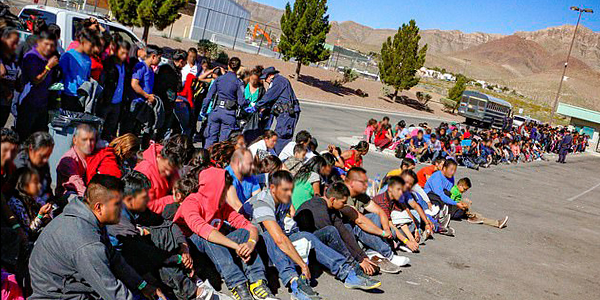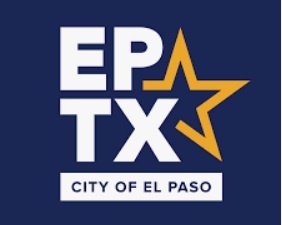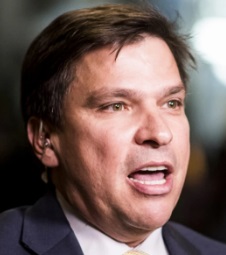
Asylum Seekers & the City of El Paso
Written by John Lopez
The crisis of the southern border is a major issue in the 2022 elections. With the high profile programs of Republican governors of Texas, Arizona and Florida to bus asylum seekers to sanctuary cities like Washington, D.C., New York City, Chicago, and Martha’s Vineyard, not a day goes by when another bus with migrants arrive at a sanctuary city from one of the governors.
The left sees the actions of Texas Governor Greg Abbott (R) and Florida Governor Ron DeSantis (R) as another way to pin the “MAGA Republican” label, when the governors, particularly Abbott and his “Operation Lone Star”, trying to prevent the asylum seekers from overrunning Texas border cities.
Buses began transporting migrants to the sanctuary cities in April.
 Unique among the migrant buses arriving in New York City (NYC) are ones from the City of El Paso at the western tip of Texas. El Paso is unique, because the El Paso City Council authorizes the transport of migrants from El Paso to prevent city social services and shelters from being overrun.
Unique among the migrant buses arriving in New York City (NYC) are ones from the City of El Paso at the western tip of Texas. El Paso is unique, because the El Paso City Council authorizes the transport of migrants from El Paso to prevent city social services and shelters from being overrun.
On Friday, Oct 7, New York City Mayor Eric Adams (D) declared an emergency because of all of the migrants arriving from the border.
According to KFOX-TV of El Paso, Mayor Adams asked the City of El Paso to stop sending migrants to NYC.
City of El Paso Spokesperson Laura Cruz-Acosta released the following statement Friday in response to Mayor Adams’ request:
“This Federal issue remains a local humanitarian concern for the City of El Paso and the Office of Emergency Management (OEM) due to the increasing number of migrants passing through the region, limited federal and local shelter capacities, and an increasing number of migrants that are not sponsored or have means to travel. With the goal to provide for the safety of the migrants from the elements and to preserve our local community’s transitory hospitality shelter capacities so they may continue to serve our homeless community, El Paso and OEM have sponsored and provided transportation services for migrants out of El Paso to locations the migrants are selecting.
“So, the migrants are selecting NYC and various other locations, El Paso and OEM is providing assistance to the migrants in the form of food, water, temporary shelter, first aid, and transportation. El Paso and OEM is not selecting NYC and no one is forced to go where they don’t want to go. Before the charter departs El Paso, we advise the NYC Mayor’s Office, the local NYC NGO [non government organization] (Grannies Respond) and the Office of Emergency Management team from New York.”
As pointed out above, the City of El Paso is not part of Governor Abbott’s Operation Lone Star migrant transport programs, which centers upon migrants arriving in the lower Rio Grande Valley of South Texas.
But as multiple published reports revealed this past week, the City of El Paso now EXCEEDING migrant busing numbers of Abbott’s Operation Lone Star.
According to KFOX, from Aug. 23 to Oct. 6, the City of El Paso said it has chartered a total of 196 buses, for a total of 9,322 people. The city said 7,368 migrants went to NYC, and 1,954 went to Chicago.
Hmmm, I don’t remember Illinois Governor JB Pritzker (D) or Chicago Mayor Lori Lightfoot (D) mentioning nearly 2,000 migrants were bused from the City of El Paso, TX and not part of Governor Abbott’s busing of migrants.
Pritzker and Lightfoot railing against Governor Abbott and have talked about seeking criminal investigation against Abbott for sending migrants, allegedly against their will, to Chicago.
The El Paso statement was clear every migrant sent voluntarily to where the MIGRANT wanted to go.
Additionally, from KFOX according to Mayor Adams, New York City has received 17,000 migrants since April. That total takes into account the number of migrants sent from El Paso.
So let met get these numbers straight, of the nearly 7,400 migrants sent from El Paso to NYC, nearly 50% of migrants arriving in NYC came from the City of El Paso, and not from governors.
Back on September 25 Beyond the Beltway with Bruce DuMont radio show, guest hosted by Eric Kohn, discussed the border crisis with some depth, and I called in to give this same perspective.
The cued YouTube video of Beyond the Beltway begins with my question, and some discussion and can be viewed here. While the discussion after my call was relatively small, 10 minutes later, a caller from El Paso, TX, gave their direct account of what was taking place in the city and at Fort Bliss (just outside El Paso).
Rodrigo’s insightful call on the cued video can be viewed here and merits listening to the entire call.
Something Rodrigo said on the call was how President Trump had negotiated with Mexico for the “Remain in Mexico” policy which ended when President Biden was inaugurated back in 2021.
One of the border Democratic members of the U.S. House, Vicente Gonzalez (D, TX-15) proposed a similar legislation in the middle of September, which calls for 3 “safe zones” to be set up in Mexico, plus 1 in Guatemala.
The bill, known as H.R. 8823, the Safe Zones Act of 2022 can be viewed here.
Reading the Gonzalez legislation, which will likely go nowhere so close to the end of the congressional term, contains components from the new defunct Remain in Mexico policy.
Plus, remember, migrants from Venezuela, as I said in my call last month, cannot be deported and cannot be sent to Mexico. They must be processed through the asylum laws in the federal courts as required by law.
El Paso is unique not only with the transportation of migrants to sanctuary cities but also to me, personally, as nearly my entire family lived in El Paso, and both my parents and siblings were all born there.
One of my first cousins, once removed, was Dr. Arthur L. Campa, and one of his books published nearly 60 years ago included my family’s chronicles, including the record of my great grandfather, whose translated name I use professionally, Juan López, became the first member of my family to own property in Texas.
López was born in 1835 in Rosales, in the state of Chihuahua, Mexico, and came to what would become part of the United States in the 1840s.
In the family chronicles, my namesake Great Grandfather López, after coming to the United States and becoming a mayordomo (trail boss) on the Santa Fe Trail, is best told by Dr. Campa himself:
“El ranchito de la Ysleta, as the family came to call their small farm, had been bought by the head of the family shortly after the Civil War, not because he was anxious to own the property, but because it was a condition laid down by his future bride before she would agree to marry him. Don Juan López, a member of a well-known family in Chihuahua, had been struck with wanderlust when he was a young boy and had gone to live with a Santa Fe trader in Kansas City, where he had remained until he attained his majority. Like many young men in search of adventure in the West at that time, he joined the Santa Fe trade and in a few years became mayordomo of one of the outfits operated by Tolland and Ochoa.
“On one of his trips to New Mexico in the early [18] sixties, Don Juan met Doña Martina De la O, the belle of the village of Doña Ana, and reputedly the best polka dancer in the Mesilla Valley. She was a first generation descendant of the De la O family, which in 1829 had been granted by the Mexican government a strip of land twenty-two miles along the [Rio Grande] river from Doña Ana south to Tortugas below the present city of Las Cruces. Don Juan left the Santa Fe trade for awhile to remain in the Mesilla Valley as a United States marshal, and also to pursue his interest in the young girl; but she would not agree to wed him until he settled down with a house and some property to his name.
“Juan López, like many pioneers of that day, was strong-willed and reluctant to give up the freedom he had grown up with, but Martina’s charms outweighed his objections and eventually led him to buy a piece of property by the Rio Grande, about sixty miles southeast of Doña Ana…”
From Treasures of the Sangre de Cristos: Tales and Traditions of the Spanish Southwest by Arthur L. Campa, 1963
Ysleta is now part of the City of El Paso, and thinking how the city where most of my family came to this country legally is overrun by a border crisis man made, I can respect the El Paso City Council’s actions to send the migrants out of El Paso, and to places where they will await their asylum hearings.
In the words of Dr. Campa:
“El Paso is unique, neither Mexican, nor Texan, nor New Mexican, and yet it is all three…So the old city nestled in the farthest corner of Texas remains the crucible of three cultures, Spanish, Anglo, and Indian, a mixture of the races that developed and today inhabit the New World.”
Maybe the November 8 mid-term elections will provide more clarity to give legislative direction to the Biden Administration to solve the southern border crisis, and bring order to the man made chaos.
John Lopez has written about policy and elections through the McHenry County Blog since 2019 through July 2021. He is now semi-retired, and does freelance work with analytics, as well as political candidates, emphasizing policy as the means to advance the conservative message, by engaging through policy “dog fighting”, applying discernment for winning and advancing God’s Kingdom agenda.
John’s known for getting past the talking points, the narratives, the abstracts, the platitudes and the bromides in order to discuss policy and apply Scripture to overcome unholy divisions in the local community, our state, and nation. John has been married for over 17 years.
Follow John on Twitter: @MarcVAvelar
















